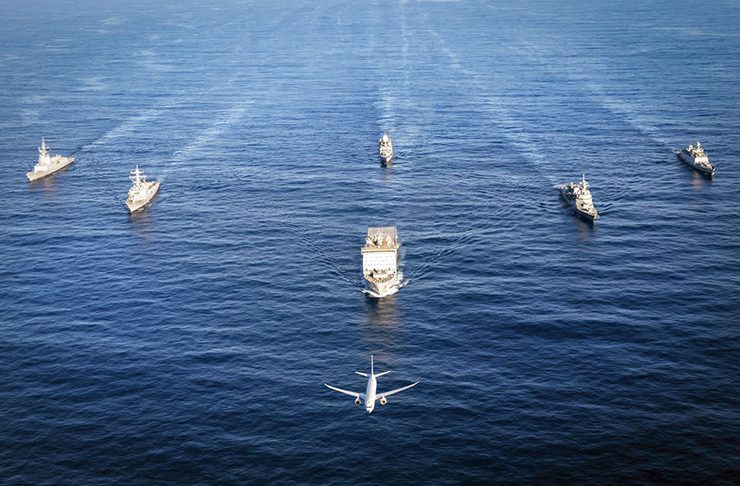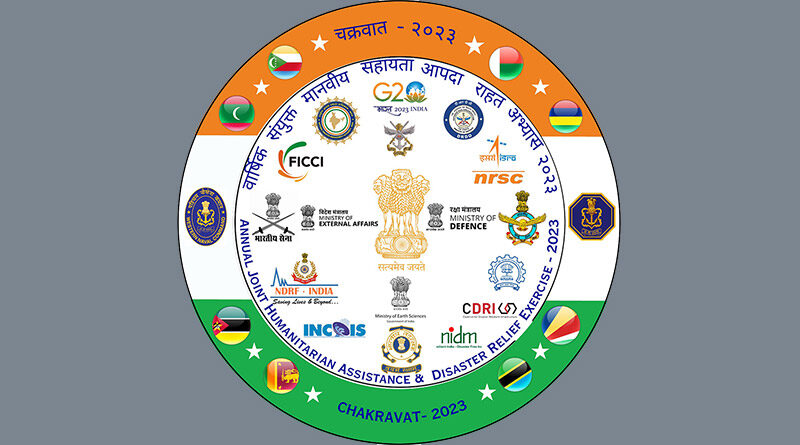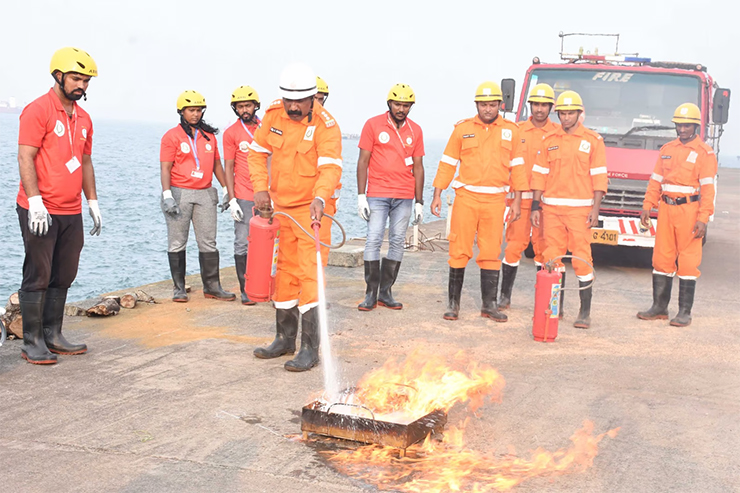
For all intents and purposes, India is a maritime nation with a glorious history. History is also being made in modern India and its approach to the maritime domain is now an everyday topic of discussion. The Indian Navy, its frontline maritime-naval force, is undoubtedly India’s greatest hard asset in nearby waters. It is a multidimensional force that is capable of undertaking brown and blue water operations in the vicinity of India and beyond respectively. Presented with the challenges and opportunities of the Indo-Pacific region, the Indian Navy has much work to do in its everyday affairs.
The Indo-Pacific is considered to be a highly strategic region that has gained much fame (and notoriety) in recent years as the future of trade, commerce, conflict, and consternation. These are intended to take place between all involved and concerned actors (state and non-state). Geostrategy compels a nation to prioritise geography when outlining strategy and the Indo-Pacific calls for an entirely new strategic assessment for countries located in its vast spaces.
The Indo-Pacific region is the summation of the Indian Ocean Region (IOR) and the Western Pacific Region. Stretching from the coastlines of East Africa to the western Americas, the Indo-Pacific is today a vital oceanic space comprising critical chokepoints that carry a majority of the world’s trade. Moreover, the chokepoints are situated at key geopolitical flashpoints such as the South China Sea. This makes the Indo-Pacific critical to not just trade but even to geopolitics between nations. Most countries have now begun to perceive the Indo-Pacific as vital to the geopolitical affairs of the world due to aspects such as energy security, maritime security, and maritime commerce.
The Indian Navy, as the maritime-naval arm of India, is considered to be a major player in Indo-Pacific affairs in part due to its sizeable inventory (capable of considerable power projection) and diverse geostrategic aims and obligations. The Indian Navy is the sea arm of the Indian armed forces and its most potent force. While considerable focus remains on the Indian Army as the spearhead of military affairs, the Navy has done well in facing the strategic challenges that have come its way. The commander-in-chief of the force is the President of India. The Indian Navy has one simple job – to ensure the comprehensive maritime security of the nation that is India.
Presented with the challenges and opportunities in the Indo-Pacific region, the Indian Navy has much work to do in its everyday affairs. As India’s multidimensional and frontline maritime-naval force, the Indian Navy is the greatest hard asset in nearby waters, capable of undertaking brown and blue water operations in the vicinity of India and beyond
Significance of December 4
December 4 is India’s iconic Navy Day. In September 2023, it was decided that the Indian Navy Day would be celebrated at the Sindhudurg Fort in Maharashtra. The Navy Day, traditionally celebrated in New Delhi, is now celebrated at other iconic and historic locations across the country. The last Navy Day, in 2022, was celebrated in Visakhapatnam. Prime Minister Narendra Modi will be in attendance at this year’s Navy Day celebrations.
The reason why the Indian Navy Day is celebrated on December 4 is because of the Indian Navy’s historic attack on the Karachi harbour during the 1971 war with Pakistan. The PNS Khaibar, a Pakistani destroyer, was sunk by the heroism of India’s naval force during the war. The attack resulted in a blockade of the port of Karachi. This act of heroism is celebrated every year in India as the Indian Navy Day (December 4).
Strategic imperatives
The Indian Navy has a number of strategic imperatives to pursue as it seeks to refine its blue water dexterity. First and foremost among these is the responsible provision of holistic maritime security to India. Regional stability and common productivity (such as bilateral and multilateral trade) are fostered through better maritime security and the Indian Navy is known to combine the best of both and always provides a way forward. Secondly, securing the immediate neighbourhood for unimpeded maritime trade and commerce is a key prerogative of the Navy. The sea lines of communication will have to be secured by the Indian Navy to ensure the free flow of trade through the chokepoints, seas, and oceans. Thirdly, the Indian Navy is to provide a credible deterrence on the high seas against the adversary. Finally, India’s navy is to engage in naval diplomacy to ensure that the softer initiatives between India and its partner countries stay on track.

For the Indian Navy to truly achieve its goals, it must continue to pursue its own and India’s interests. Cooperative security is a theory that bodes well as a framework for managing regional distress. Cooperative security also means collective security and emphasises the role of partnerships in the approach to providing maritime security. When one state is threatened by any actor, its partners swear to come to its rescue. Further, cooperating bilaterally with partners is also a good idea. Naval exercises are the norm between the Indian Navy and its partner navies. Carried out either annually or at more times, these exercises help improve interoperability and ensure operational preparedness. These exercises also help refine the Indian Navy’s capabilities and help it achieve the status of becoming a net security provider in the region. To be a net security provider, India also needs quality hard assets at its disposal. Strategic partnerships can facilitate trade in regard to defence equipment.
Humanitarian assistance
The Indian Navy is deeply involved in humanitarian assistance and disaster relief (HADR) operations in its vicinity and beyond. As a benevolent force, the Indian Navy is routinely involved in HADR operations and has gained a reputation for being quite capable of handling them ever so well. The Indian Navy undertakes HADR exercises (Chakravat-23) further cementing India’s capacities and capabilities in the maritime domain. Mission Sagar is a renowned HADR operation to provide supplies during the novel Coronavirus pandemic. The provision of quality and quick humanitarian assistance has also been a pillar of Indian policies such as ‘Neighbourhood First’ and is well placed to realise Prime Minister Narendra Modi’s Security And Growth for All in the Region (SAGAR) vision.
During the 1971 war with Pakistan, the PNS Khaibar, a Pakistani destroyer, was sunk by the heroism of India’s naval force. The December 4 attack resulted in a blockade of the port of Karachi. This act of heroism is celebrated every year in India as the Indian Navy Day
Other imperatives include the Indo-Pacific-specific Indo-Pacific Oceans Initiative comprising seven maritime pillars of cooperation. Further, interlinking SAGAR with the Indian Indo-Pacific strategy provides a broad framework in which India and its navy can comfortably operate. In his book, The India Way, external affairs minister S Jaishankar has said that India needs to be more forthcoming in the domain of HADR operations.
Strategic partnerships
As India pursues more strategic partnerships with key countries in the region and beyond, the inclusion of the Navy as a medium of expression of Indian security strategies is a necessity. Chief among the strategic partnerships are the landmark ones with the United States of America (USA), Japan, South Korea, Australia, Southeast Asian countries and West Asian countries. India is also involved in the Quadrilateral Security Dialogue (QUAD) featuring three partners in the US, Japan, and Australia.
These strategic partnerships feature specific tenets dedicated to the broader realm of maritime security. Of these, strategic partnerships with like-minded countries are vital although India has not shied away from forging strategic partnerships with non-democracies solely based on its interests across several domains. For example, in West Asia, India partners strategically with several non-democracies in a bid to gain access to a region that is a vital reserve of energy and helps India fulfil its energy security.
China’s People’s Liberation Army Navy presents the greatest challenge to the Indian Navy in the Indo-Pacific region. China’s ‘all-weather’ friendship with Pakistan is also an issue of concern. Together, Islamabad and Beijing might present a new challenge to New Delhi in the maritime domain
Operational preparedness
India’s Navy is a masterful force that combines the best of state-of-the-art equipment and highly skilled manpower. Moreover, it continues to evolve and modernise and has developed a uniquely indigenous focus following the induction of the INS Vikrant aircraft carrier. The Vikrant was developed entirely indigenously and has been deployed since September 2022 after being commissioned from the Cochin Shipyard. The force’s operational preparedness has considerably expanded since the induction of the indigenous aircraft carrier.
The induction of the carrier heralds India’s dream of giving equal attention to its western and eastern seaboard through the deployment of advanced carrier battle groups (CBGs). A CBG is an aircraft carrier-led force comprising auxiliary ships in support. These are intended for high-intensity operations in the maritime naval arena.
India intends to spruce up its naval capacities and capabilities through the induction of new equipment such as maritime naval aircraft and submarines. India is set to purchase 26 (including four trainers) Rafale Marine naval fighter aircraft from Dassault Rafale, France, in the upcoming years. The Rafales will eventually seek to replace the present inventory of MiG-29Ks (40 in service).

Greatest challenge
China’s People’s Liberation Army Navy (PLAN) presents the greatest challenge to the Indian Navy in the Indo-Pacific region. The PLAN is known to manoeuvre in the region in pursuit of Chinese territorial claims, which are plenty. The PLAN is ably supported by the China Coast Guard and the unofficial Chinese maritime militia in furthering Chinese national interest in the Indo-Pacific region. The Indian Navy is preparing a 175-ship plan (25 ships more than its current strength of 150) to particularly deal with the Chinese threat in the Indian Ocean, which India claims as its own backwaters.
China’s ‘all-weather’ friendship with Pakistan is also an issue of concern. Together, Islamabad and Beijing might present a new challenge to New Delhi in the maritime domain. India considers itself to be the master of the Indian Ocean region and aims to build credibility in the Indo-Pacific, too. However, the twin threat of Pakistan and China stands in the way. Apart from state actors, non-traditional security threats are many, too. Faced with piracy, maritime terrorism, and maritime crimes such as drug and human trafficking, India is compelled to rely on its Navy to deal with these ever-present threats. Other non-traditional threats include climate change-induced sea-level rise and maritime pollution. State actors in particular are challenging the rules-based, liberal international order and need to be dealt with.
India’s strategic partners include the United States of America, Japan, South Korea, Australia, Southeast Asian countries, and West Asian countries. India is also involved in the Quadrilateral Security Dialogue (QUAD) featuring three partners in the US, Japan, and Australia
Valiant force
The Indian Navy is omnipresent in the Indo-Pacific region. Its approach and significance have been detailed in the preceding paragraphs. It is clear that the Indian Navy is compelled to prioritise the Indo-Pacific owing to emerging circumstances and rapidly evolving geopolitical scenarios. Its approach to the Indo-Pacific region is characterised by a number of relevant factors that have caused it to ensure a broad-based role in the region. The Indian government’s vision of a free, open, inclusive, and prosperous Indo-Pacific is being realised with the help of the valiant Indian naval force i. e. the Indian Navy.
India is truly blessed to possess a force so brave and sincere in its aim to emerge as, firstly, a regional and secondly, a global power. Only the Indian Navy can help India achieve this and it is fitting that the Indian Navy Day be celebrated with much pomp and fervour in tribute to the very deserving force that is the Indian Navy. So long as India remains committed to ensuring a stable, rules-based order in the Indo-Pacific region, the Indian Navy will always be at the helm of Indian strategic affairs.
-The writer is a Research Fellow at Defence Research and Studies (DRaS) and has been most notably associated previously with the National Maritime Foundation, New Delhi, as a Researcher. His core work lies in the domains of International Relations, the Maritime Domain, and Strategic Studies. His geographical focus areas are the Indian subcontinent, Southeast and East Asia (Japan, South Korea, ASEAN), and the Indian Ocean and Indo-Pacific regions. The views expressed are personal and do not necessarily reflect the views of Raksha Anirveda








